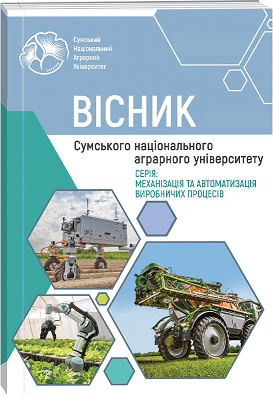THE SUBSTANTIATION OF THE TECHNOLOGY OF CURD PASTES WITH FREEZE-DRIED MELON
Abstract
Cheese products made with vegetable ingredients added to cottage cheese are very healthy. As vegetable raw materials are a source of essential amino acids, they have immunomodulatory functions and promote the absorption of fat-soluble vitamins and iron transport in the human body. To reduce the risk of exposure to active acidity and to provide additional moisture to the finished products from fresh berries and fruits, it is possible to add fruit and vegetable powders obtained by freeze-drying to the curd mass. The work aims to develop a technology for curd pastes with increased nutritional value. To achieve this goal, the possibility of using freeze-dried melon powders in curd pastes was determined. The chemical composition of freeze-dried melon powders is represented by a significant vegetable protein content (8.35±1.0 g/100 g). The combination of vegetable and animal proteins will allow the developed fortified product's maximum biological value and the fermented milk product's optimal amino acid composition. The high dietary fiber content (10.0±1.0 g/100 g) gives functional and technological properties to melon powders. Based on comprehensive studies, an acceptable dose of freeze-dried melon powder in curd paste is 5.0% to 20%. Organoleptic evaluation in conjunction with physicochemical parameters showed that a rational solution is to add 15%. The recipe composition of the curd paste is as follows: 62% cottage cheese (with lactulose), 23% cream, and 15% freeze-dried melon powder. The use of freeze-dried melon powder in curd paste technology helps increase the calorie content by increasing the carbohydrate content in vegetable raw materials without adding sugar to the recipe. The product is also enriched with dietary fiber, corresponding to 6% of the daily value. A recipe and technological scheme for curd pastes with increased biological value. A set of data characterizing the quality of the developed pastes was obtained, and their nutritional and biological value was proved.
References
2. Feng, S., Bi, J., Laaksonen, T., Laurén, P., & Yi, J. (2024). Texture of freeze-dried intact and restructured fruits: Formation mechanisms and control technologies. Trends in Food Science & Technology, 143, 104267.
3. Gutiérrez-Méndez, N., Balderrama-Carmona, A., García-Sandoval, S. E., Ramírez-Vigil, P., Leal-Ramos, M. Y., & García-Triana, A. (2019). Proteolysis and rheological properties of cream cheese made with a plant-derived coagulant from Solanum elaeagnifolium. Foods, 8(2), 44.
4. Kochubei-Lytvynenko, O., & Yatsenko, O. (2020). Determining the expediency of using protein-polysaccharide complexes based on dairy and vegetable proteins in the technology of butter pastes. Eastern-European Journal of Enterprise Technologies, 11 (108), 37–44.
5. Laur, L. M., & Tian, L. (2021). Provitamin A and vitamin C contents in selected California-grown cantaloupe and honeydew melons and imported melons. Journal of Food Composition and Analysis, 24(2), 194–201.
6. Lipșa, F. D., Ulea, E., Gafencu, A. M., Florea, A. M., Rațu, R. N., Stoica, F., & Râpeanu, G. (2024). Pumpkin Pomace Powder as a Bioactive Powder Ingredient for Whey Cheese Production. Applied Sciences, 14(21), 9624.
7. Lucera, A., Costa, C., Marinelli, V., Saccotelli, M. A., Del Nobile, M. A., & Conte, A. (2018). Fruit and vegetable by-products to fortify spreadable cheese. Antioxidants, 7(5), 61.
8. Marchiani, R., Bertolino, M., Ghirardello, D., McSweeney, P. L., & Zeppa, G. (2016). Physicochemical and nutritional qualities of grape pomace powder-fortified semi-hard cheeses. Journal of food science and technology, 53, 1585–1596.
9. Nazarenko, Yu. V., Puryhin, I. O., Bolhova, N. V., & Synenko, T. P. (2023). Rozrobka retsepturnykh kompozytsii syrnykh past z pidvyshchenoiu biolohichnoiu tsinnistiu [Development of formulation compositions of cheese pastes with increased biological value]. Tavrian scientific bulletin. Series: Technical sciences(1), 65–74. [in Ukrainian].
10. Picciotti, U., Massaro, A., Galiano, A., & Garganese, F. (2022). Cheese fortification: Review and possible improvements. Food Reviews International, 38(sup1), 474–500.
11. Skrypnichenko, D. M., & Klymentieva, I. O. (2020). Vstanovlennia hranychnoho terminu zberihannia syrkovoho desertu z dodavanniam medu ta voloskykh horikhiv [Setting a shelf life for a curd dessert with honey and walnuts]. Modern science: problems and innovations, 261–267. [in Ukrainian].

 ISSN
ISSN  ISSN
ISSN 



